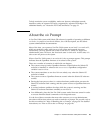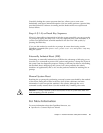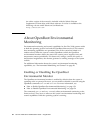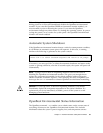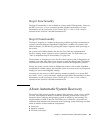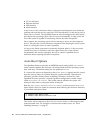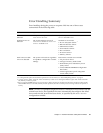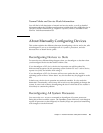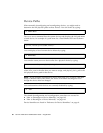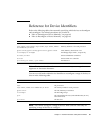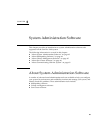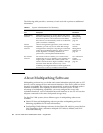
Chapter 4 Network Interfaces and System Firmware 57
Error Handling Summary
Error handling during the power-on sequence falls into one of three cases
summarized in the following table.
1. A working alternate path to the boot disk is required. For more information, see “About Multipathing Software” on page64.
2. A single processor failure causes the entire CPU/Memory module to be deconfigured. Reboot requires that another functional
CPU/Memory module be present.
3. Since each physical DIMM belongs to two logical memory banks, the firmware deconfigures both memory banks associated with the
affected DIMM. This leaves the CPU/Memory module operational, but with one of the processors having a reduced complement of
memory.
Note – If POST or OpenBoot Diagnostics detects a nonfatal error associated with the
normal boot device, the OpenBoot firmware automatically deconfigures the failed
device and tries the next-in-line boot device, as specified by the boot-device
configuration variable.
Scenario System Behavior Notes
No errors are
detected.
The system attempts to boot if
auto-boot? is true.
By default, auto-boot? and auto-boot-on-
error? are both true.
Nonfatal errors are
detected.
The system attempts to boot if
auto-boot? and auto-boot-on-
error? are both true.
Nonfatal errors include:
• FC-AL subsystem failure
1
• Ethernet interface failure
• USB interface failure
• Serial interface failure
• PCI card failure
• Processor failure
2
• Memory failure
3
Fatal nonrecoverable
errors are detected.
The system will not boot regardless
of OpenBoot configuration variable
settings.
Fatal nonrecoverable errors include:
• All processors failed
• All logical memory banks failed
• Flash RAM cyclical redundancy check
(CRC) failure
• Critical FRU-ID SEEPROM configuration
data failure
• Critical application specific integrated
circuit (ASIC) failure



